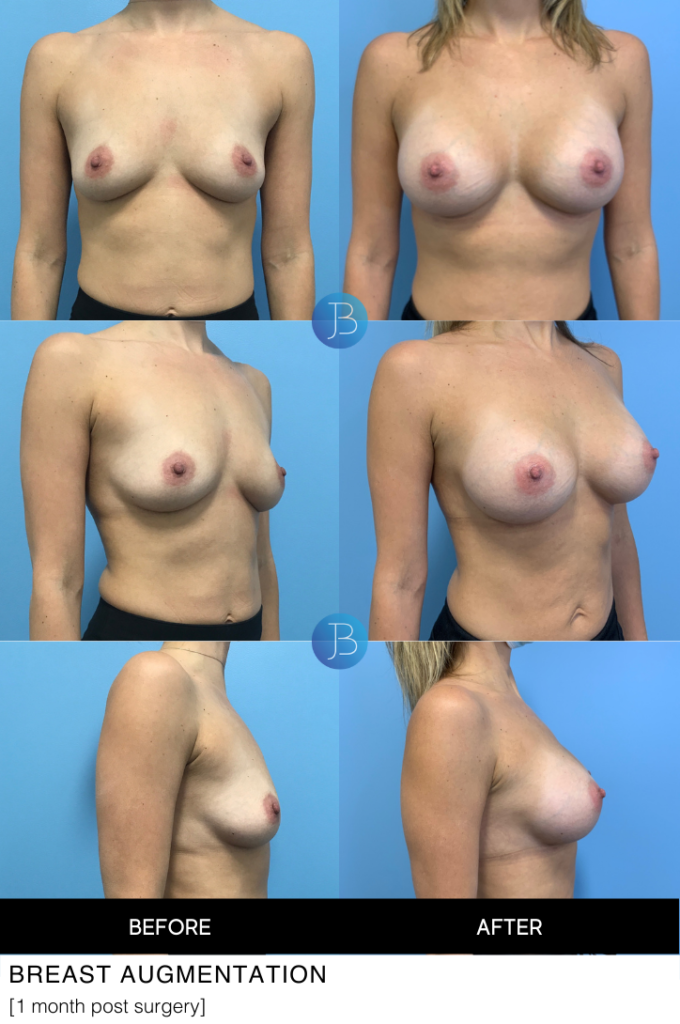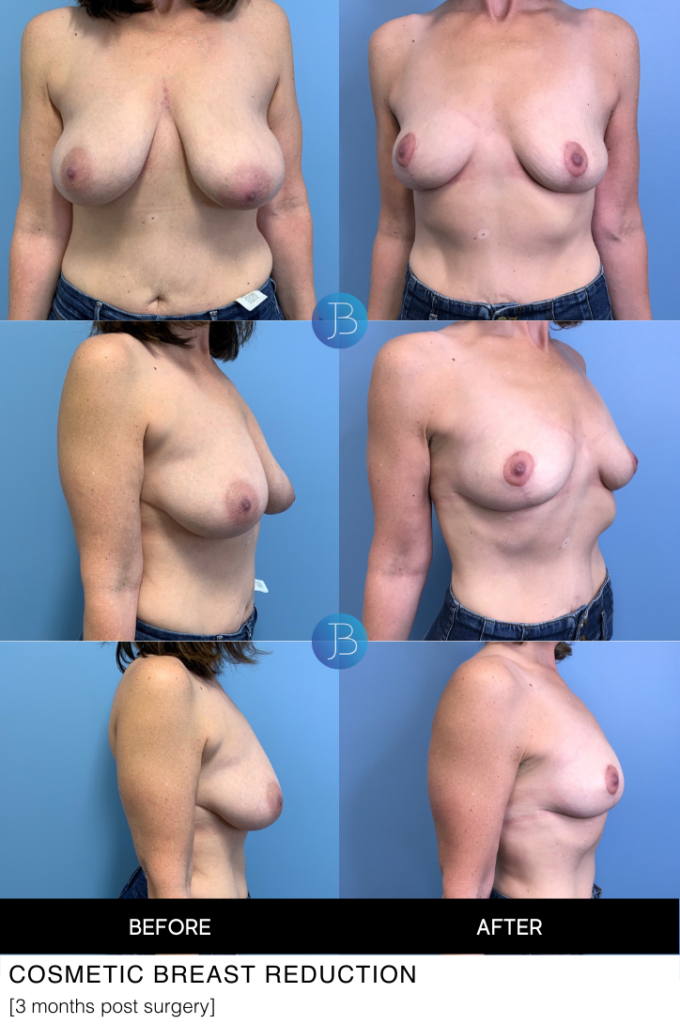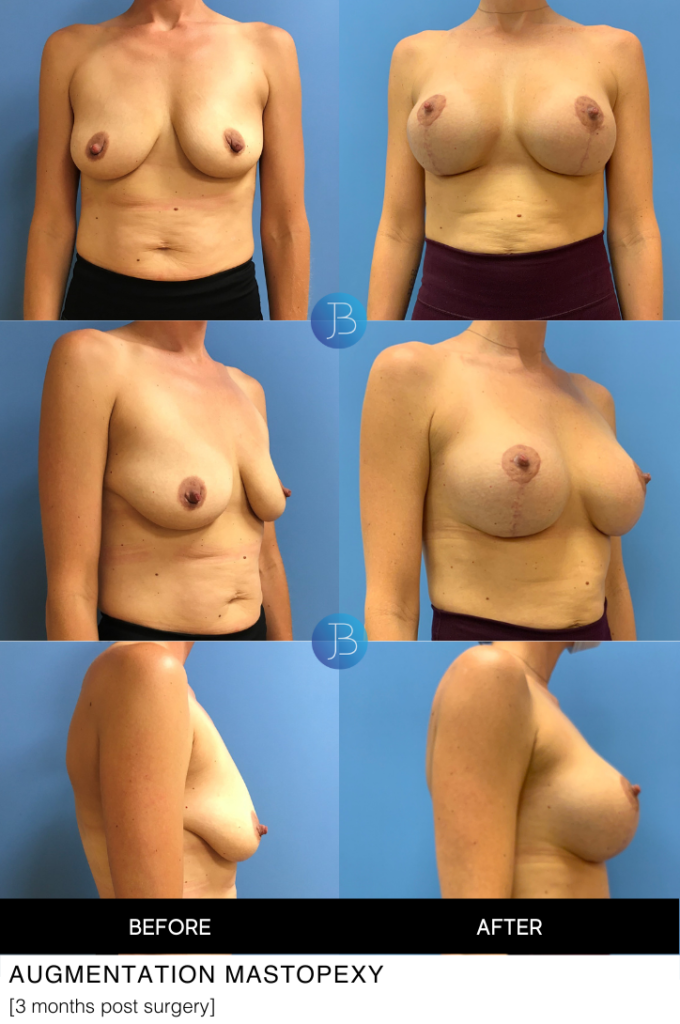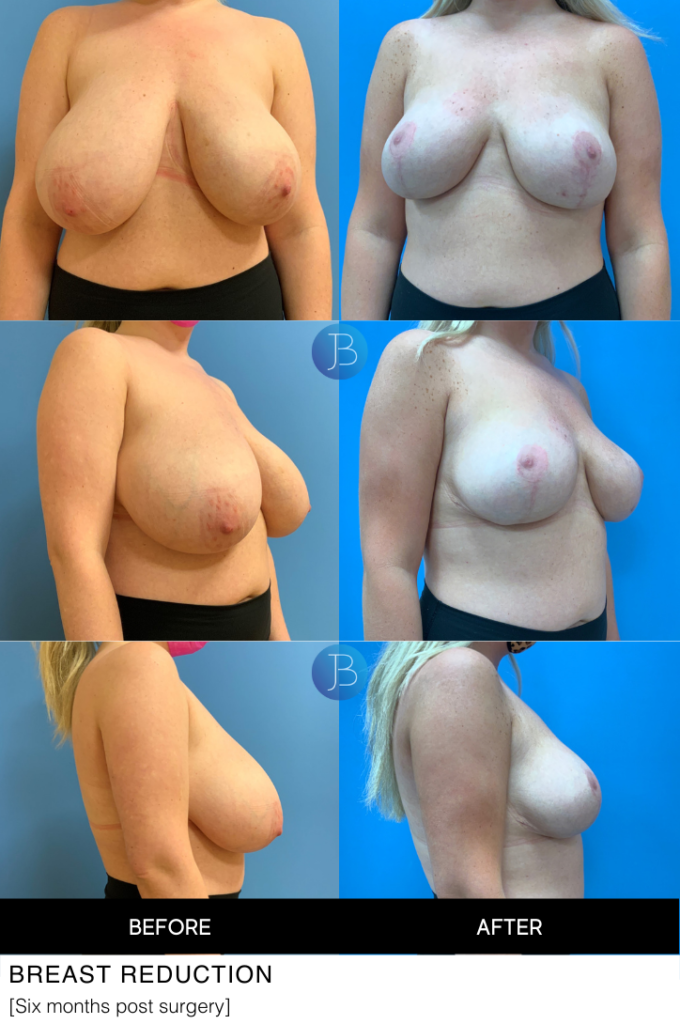Types of Breast Surgery
When we think about cosmetic breast surgery we think about two different types of situations. One is a situation where we’re adding volume, and the other situation is where we’re subtracting volume and tissue.
In this post we will explore the following:
- Breast Augmentation
- Mastopexy
- Augmentation + Mastopexy
- Dual Plane Breast Augmentation
- Breast Reduction
Breast Augmentation
In the cases where we’re adding volume, the most common surgery to perform is a breast augmentation. Breast augmentation can be done with silicone or saline implants. My preference is silicone as it provides a more natural appearance, feel and has decreased complications such as rippling. In a breast augmentation there are multiple ways of placing an implant via multiple types of incision patterns, including my preferred location the inframammary fold which hides the scar underneath the breast.

A breast augmentation can be tailored to the patients needs. We typically do an augmentation alone when a patient has micromastia or minimal breast tissue. It can be designed for the patients desired size and style. What I find in my practice is that a naturally enhanced look is typically the most preferred, however we can really go as big or small as the patient’s body frame will allow. The way that we choose the implant is usually based on the base width of the breast which allows us to center the breast implant under the native tissue so that way it doesn’t look too big for the chest or too small. And by sticking to these principles we are typically able to achieve a very natural look.
Mastopexy (Breast Lift)
In patients who have gone through pregnancy or other changes in life, like menopause, patients may find that their breast volume deflates and they might start having ptosis, otherwise known as sagging. When someone has ptosis but is happy with their current breast volume we can do a mastopexy or a lift. This is again designed through multiple different incision patterns depending on the degree of ptosis that we find. Patients who have the greatest degree of ptosis are typically mass weight loss patients, people who have lost greater than 50 pounds through diet or exercise or bariatric surgery, and these patients require larger incisions and can even be candidates for auto augmentation where we rearrange their tissue in a way that it looks like they’ve had a breast implant but we’ve just rearranged the tissue. These are specialized cases that can only be done with a select group of patients.

Augmentation + Mastopexy
Where a mastopexy can fall short is that in patients who do not have enough volume in the upper pole of their breast, the area between the clavicle and the top portion of the breast. These patientes may look a little hollow after a mastopexy, because the mastopexy doesn’t bring the tissue up above the superior pole of the breast. Patients can test this at home, if they place thier hand under their breast and gently cup it. The superior pole of the breast will be seen where the breast begins to fold on the chest. This line is the highpoint that can be achieved with a mastopexy. If there is a desired volume above this level then we have to consider a third option, which is an augmentation mastopexy which is a combined procedure of the first two options.

These are more complicated cases because we are trying to make the breast to both get bigger on one dimension and smaller in another at the same time. These have to be carefully planned and they do have a higher revision rate than the other two options. The reason being is that implants and tissue will settle at different rates and there may need to be minor tweaks that happen in the office, or major tweaks that have to happen in the operating room.
The national average for revisions in augmentation mastopexy is approximately 20% that’s 1 in 5 cases. At Bloom Plastic Surgery, less than 20% of our patients require a revision, but we still quote the nation average. Patients wanting these procedures should plan for the possibility of a future revision procedure.
Dual Plane Breast Augmentation
There is a fourth type of procedure that can be completed in patients with very mild ptosis, or mild sagging, called a dual plane breast augmentation. The tissue between he muscle and the breast tissue is released so that when the implant is placed it allows for the breast tissue to slide up over the muscle which then gives a slight lift. Think of this as an analogy comparative to a pregnant woman wearing the same shirt throughout her pregnancy. As she gets further down the road into her second and third trimester that t-shirt will start to ride up higher and higher on her stomach, which is exactly what we want the breast tissue to do. We want it to follow the improved volume and raise up. Now again, this can only be done in the most mild cases of ptosis to get the best results, however it can minimize scarring on the breast which can be very cosmetically acceptable from patients.
Breast Reduction
The fifth category is cosmetic breast reductions. These are patients who do not qualify for insurance, either because they don’t have insurance or because their insurance is asking us to take out too much based on their body’s surface area, which is a formula that utilizes height and weight measurements. During a cosmetic reduction we can design a reduction in a way that minimizes the amount of tissue removed so that we can get to the volume the patient would like. With every cosmetic reduction comes a mastopexy as well, so we usually lift and reposition the areola, as well as make them smaller in size in the cases that it’s required.

Considerations
With any breast surgery we think of major complications as hematoma and infection, but as noted there may be issues with scarring, breast position, implant position, and revisions are not uncommon, either in the short term or the long term. Breast ptosis will continue to follow gravity as patients continue to get older, so revision mastopexy may be needed. And breast implants are not permanent devices and typically require replacement at 10+ years. There are monitoring protocols that we discuss with patients at their consultation, and their pre-op and post-op appointments.
Your satisfaction is our goal!
Breast surgery is one of the most highly customizable forms of cosmetic surgery available today, with myriad choices and options that can, at times, seem overwhelming. How do you know which options are right for you? How can you decide which choices will result in the perfect breasts for you? At Bloom Plastic Surgery, we are here to help. We will work closely with you throughout the entire process, from initial consultation to final follow-up visit, to ensure that you understand the full range of choices appropriate for you, the benefits (and drawbacks) of each one, and how each option may impact your final results. We will help you clearly articulate your breast surgery goals, help you visualize how your choices will alter your appearance, and then work with you to develop a customized surgical plan designed to achieve your goals.
